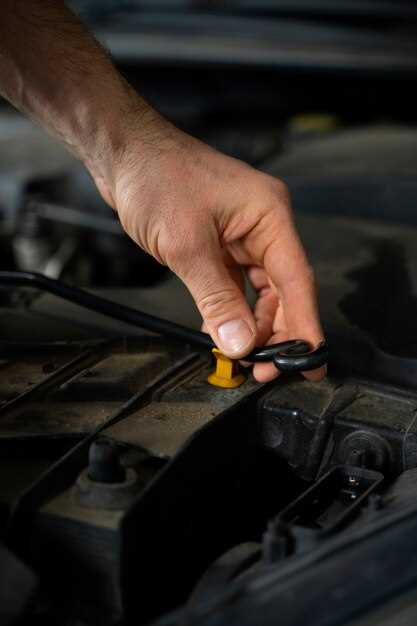
Transmission fluid plays a vital role in the performance and longevity of your vehicle’s transmission system. It lubricates the internal components, helps cool the transmission, and facilitates smooth gear shifts. Over time, this fluid can degrade and become contaminated, potentially leading to costly repairs if not properly maintained.
In this guide, we will walk you through the essential steps for checking and changing your transmission fluid. Whether you are a seasoned mechanic or a novice car owner, understanding the importance of this task and knowing how to perform it can save you time, money, and headaches in the future.
From identifying the right type of fluid for your vehicle to knowing when to perform a change, we will cover all the aspects necessary for effective maintenance. With this knowledge, you can ensure your transmission remains in optimal condition, contributing to a smoother driving experience and the overall health of your vehicle.
How to Check Transmission Fluid Levels Accurately

Checking the transmission fluid levels is crucial for maintaining the health of your vehicle’s transmission system. Follow these steps for an accurate assessment.
Firstly, ensure the vehicle is parked on a level surface and the engine is running. This allows the transmission fluid to circulate, providing a more accurate reading. If the vehicle has been recently driven, let the engine idle for a few minutes to warm up the fluid to its normal operating temperature.
Next, locate the transmission dipstick, which is typically located near the back of the engine bay. Remove the dipstick, wipe it clean with a lint-free cloth or paper towel to eliminate any residue that could affect the reading, and reinsert it fully into the tube. Then, remove it again to check the fluid level.
Examine the dipstick for fluid level indicators. The fluid should be within the ‘full’ and ‘low’ markings. If the level is at or below the ‘low’ mark, additional fluid is needed. Make sure to use the correct type of transmission fluid as specified in your vehicle’s owner manual.
While checking the fluid level, also assess the fluid’s color and consistency. Healthy transmission fluid is usually a bright red or pink color, while dark brown or black indicates contamination or degradation. If the fluid appears cloudy or has a burnt smell, it may be time for a change.
If the fluid level is low, use a funnel to add fluid gradually, checking the level frequently to avoid overfilling. After reaching the desired level, securely reinsert the dipstick and close the engine compartment. Regular checks can help prevent transmission issues and extend the life of your vehicle.
Steps for Draining and Replacing Transmission Fluid Safely
Changing your vehicle’s transmission fluid can ensure optimal performance and longevity of the transmission system. Follow these steps for a safe and effective process.
1. Gather Necessary Tools and Materials: Before starting, make sure you have the required tools and materials at hand. You will need a wrench set, a drain pan, a funnel, new transmission fluid, and a filter (if applicable). Always consult your vehicle’s manual for the specific type and amount of fluid required.
2. Prepare the Vehicle: Park your vehicle on a level surface and set the parking brake. Ensure the engine is off and cool, then disconnect the battery to prevent any electrical hazards during the process.
3. Locate the Transmission Drain Plug: Refer to your vehicle’s manual to find the transmission drain plug. Position a drain pan underneath the drain plug to catch the fluid as it drains. If necessary, raise the vehicle using jack stands for better access.
4. Drain the Old Transmission Fluid: Using the appropriate wrench, carefully remove the drain plug. Allow the old transmission fluid to fully drain into the pan. Be cautious, as the fluid may be hot if the engine was recently running. Once the fluid has completely drained, replace and tighten the drain plug securely.
5. Replace the Transmission Filter (if applicable): Some vehicles require a filter change during fluid replacement. If yours does, locate and remove the old filter according to the manual’s instructions. Clean the filter housing and install the new filter, ensuring a snug fit.
6. Add New Transmission Fluid: Using a funnel, pour the new transmission fluid into the dipstick tube or designated fill point. Refer to your vehicle’s manual for the correct fill level. Check the fluid level with the dipstick as you fill, adding fluid as necessary.
7. Check for Leaks: Once you have added the new fluid, start the engine and let it idle for a few minutes. Shift through all the gears while the vehicle is stationary. Check for any leaks around the drain plug and filter area. If leaks are present, address them before proceeding.
8. Dispose of Old Fluid Properly: Do not pour used transmission fluid down the drain or throw it in the trash. Instead, take the old fluid to a recycling center or an automotive shop that accepts used oil and fluids.
Following these steps will help you drain and replace your transmission fluid safely, assisting in maintaining your vehicle’s performance.
Identifying Signs of Transmission Fluid Contamination

Contaminated transmission fluid can lead to severe damage in your vehicle’s transmission system. Recognizing the signs of contamination early can help prevent costly repairs. One major indicator is a change in color. Healthy transmission fluid typically appears red or amber, while contaminated fluid may turn dark brown or even black.
Another sign is the presence of a burnt smell. If the fluid emits a strong, acrid odor, it likely means it has overheated and degraded. This can indicate that the fluid is not effectively lubricating the transmission components, leading to further problems.
Moreover, if you notice metal shavings or debris in the fluid when checked, this is a clear sign of internal wear and potential contamination. Excessive dirt or sludge can also indicate that the fluid is no longer functioning properly and has accumulated harmful particles.
Additionally, irregular gear shifts or slipping can signal that the transmission fluid is no longer providing the necessary hydraulic pressure. If your vehicle hesitates or has difficulty engaging gears, it’s vital to check the condition of the transmission fluid.
Finally, if the fluid level consistently drops without visible leaks, it may suggest internal issues where contaminants or debris are interfering with the proper sealing of components. Regularly inspecting and maintaining your transmission fluid can help catch these issues early and extend the life of your vehicle’s transmission.



